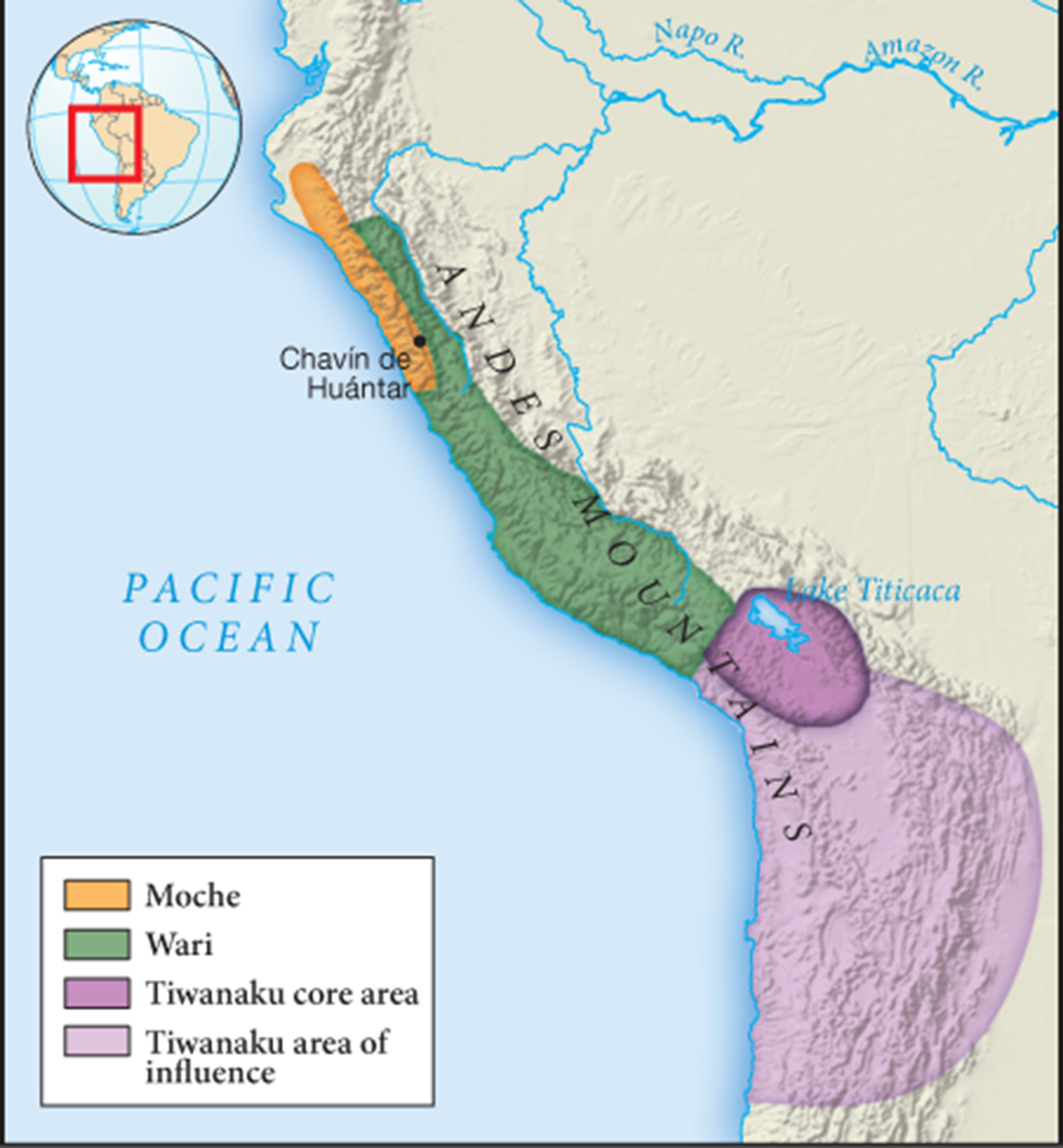Civilizations of the Andes

Yet another and quite separate center of civilization in the Americas lay in the dramatic landscape of the Andes. Bleak deserts along the coast supported human habitation only because they were cut by dozens of rivers flowing down from the mountains, offering the possibility of irrigation and cultivation. The offshore waters of the Pacific Ocean also provided an enormously rich marine environment with an endless supply of seabirds and fish. The Andes themselves, a towering mountain chain with many highland valleys, afforded numerous distinct ecological niches, depending on altitude. Andean societies generally sought access to the resources of these various environments through colonization, conquest, or trade—
The most well-
The coastal region of central Peru had in fact generated one of the world’s First Civilizations, known as Norte Chico, dating back to around 3000 B.C.E. (see Chapter 2). During the two millennia between roughly 1000 B.C.E. and 1000 C.E., a number of Andean civilizations rose and passed away. Because none of them had developed writing, historians are largely dependent on archeology for an understanding of these civilizations.